-
Product Name
GLI3-Specific antibody
- Documents
-
Description
GLI3-Specific Rabbit Polyclonal antibody. Positive WB detected in human placenta tissue, mouse lung tissue. Positive IP detected in mouse lung tissue. Positive FC detected in HepG2 cells. Positive IHC detected in human testis tissue, human colon tissue. Positive IF detected in HepG2 cells. Observed molecular weight by Western-blot: 230kd,83-86kd
-
Tested applications
ELISA, WB, IF, IHC, FC, IP
-
Species reactivity
Human,Mouse,Rat; other species not tested.
-
Alternative names
ACLS antibody; GCPS antibody; GLI family zinc finger 3 antibody; GLI3 antibody; PAP A antibody; PAPA antibody; PAPA1 antibody; PAPB antibody; PHS antibody; PPDIV antibody; Zinc finger protein GLI3 antibody
-
Isotype
Rabbit IgG
-
Preparation
This antibody was obtained by immunization of Peptide (Accession Number: NM_000168). Purification method: Antigen affinity purified.
-
Clonality
Polyclonal
-
Formulation
PBS with 0.1% sodium azide and 50% glycerol pH 7.3.
-
Storage instructions
Store at -20℃. DO NOT ALIQUOT
-
Applications
Recommended Dilution:
WB: 1:200-1:1000
IP: 1:200-1:1000
IHC: 1:20-1:200
IF: 1:10-1:100
-
Validations
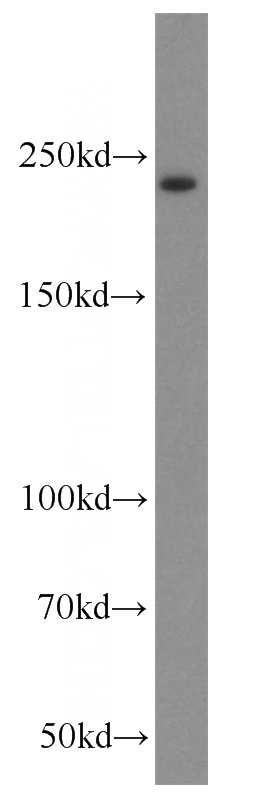
human placenta tissue were subjected to SDS PAGE followed by western blot with Catalog No:111022(GLI3-Specific antibody) at dilution of 1:400
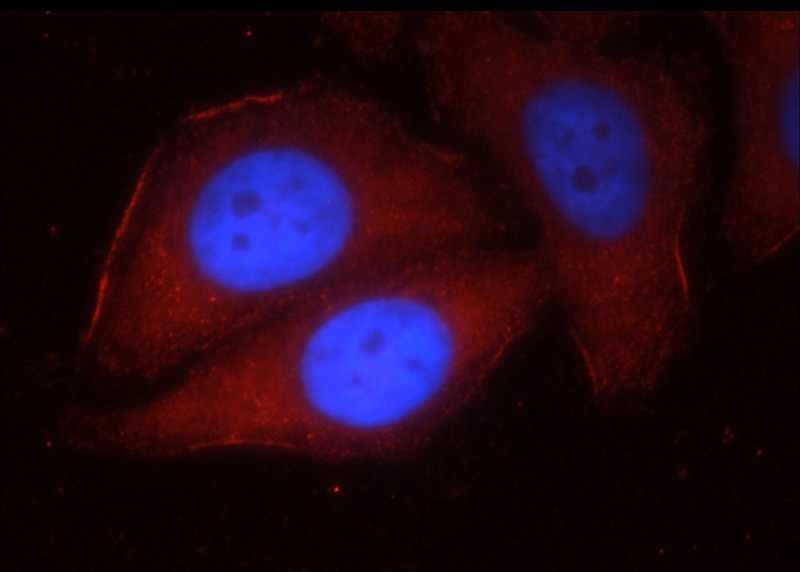
Immunofluorescent analysis of HepG2 cells using Catalog No:111022(GLI3-Specific Antibody) at dilution of 1:25 and Rhodamine-Goat anti-Rabbit IgG
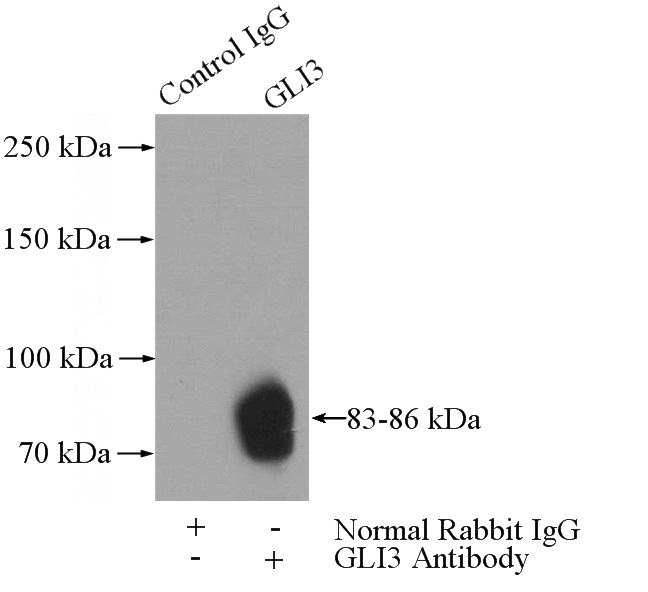
IP Result of anti-GLI3-Specific (IP:Catalog No:111022, 4ug; Detection:Catalog No:111022 1:300) with mouse lung tissue lysate 4000ug.
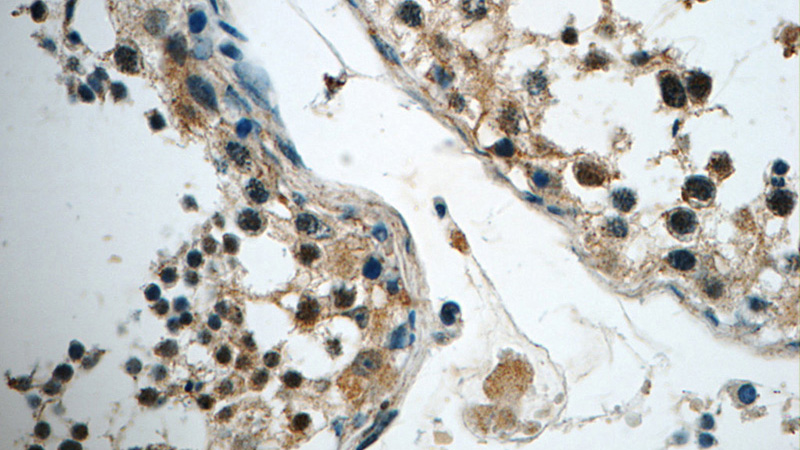
Immunohistochemistry of paraffin-embedded human testis tissue slide using Catalog No:111022(GLI3-Specific Antibody) at dilution of 1:50
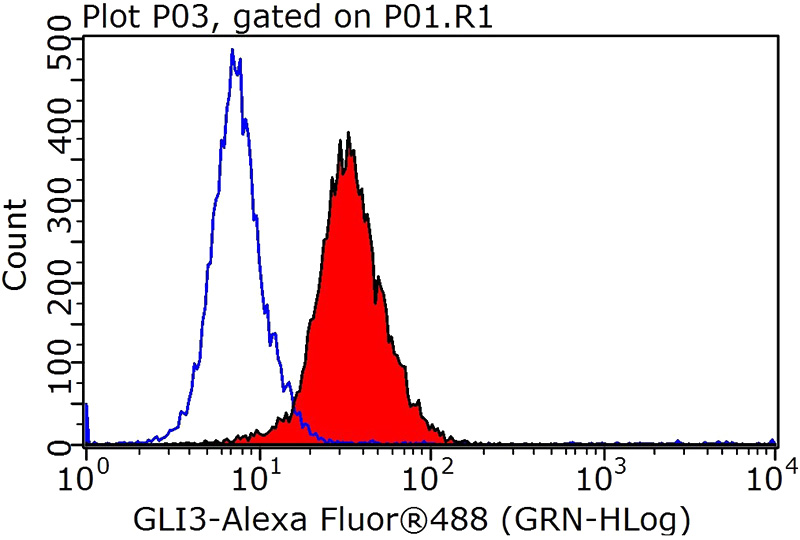
1X10^6 HepG2 cells were stained with 0.2ug GLI3-Specific antibody (Catalog No:111022, red) and control antibody (blue). Fixed with 90% MeOH blocked with 3% BSA (30 min). Alexa Fluor 488-congugated AffiniPure Goat Anti-Rabbit IgG(H+L) with dilution 1:1000.
-
Background
GLI3 belongs to the GLI C2H2-type zinc-finger protein family. GLI3 plays a role in limb and brain development. GLI3 is implicated in the transduction of SHH signal. Defects in GLI3 are the cause of Greig cephalo-poly-syndactyly syndrome (GCPS). Defects in GLI3 are a cause of Pallister-Hall syndrome (PHS). Defects in GLI3 are a cause of type A1/B postaxial polydactyly (PAPA1/PAPB). Defects in GLI3 are a cause of type IV preaxial polydactyly. Defects in GLI3 are the cause of acrocallosal syndrome (ACS). The antibody is specific to GLI3.
-
References
- Trnski D, Sabol M, Gojević A. GSK3β and Gli3 play a role in activation of Hedgehog-Gli pathway in human colon cancer - Targeting GSK3β downregulates the signaling pathway and reduces cell proliferation. Biochimica et biophysica acta. 1852(12):2574-84. 2015.
- Men Y, Zhang A, Li H. LKB1 Regulates Cerebellar Development by Controlling Sonic Hedgehog-mediated Granule Cell Precursor Proliferation and Granule Cell Migration. Scientific reports. 5:16232. 2015.
Related Products / Services
Please note: All products are "FOR RESEARCH USE ONLY AND ARE NOT INTENDED FOR DIAGNOSTIC OR THERAPEUTIC USE"
